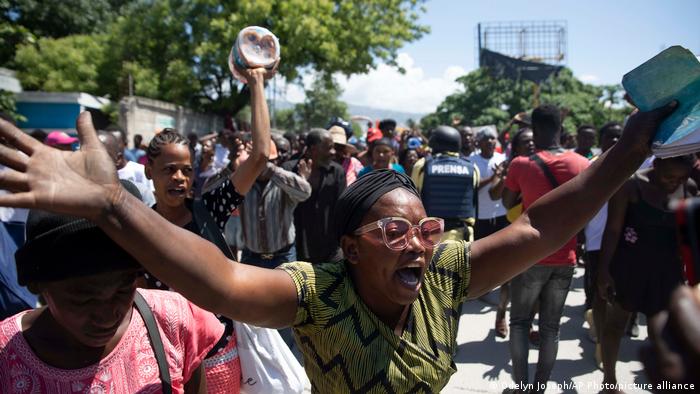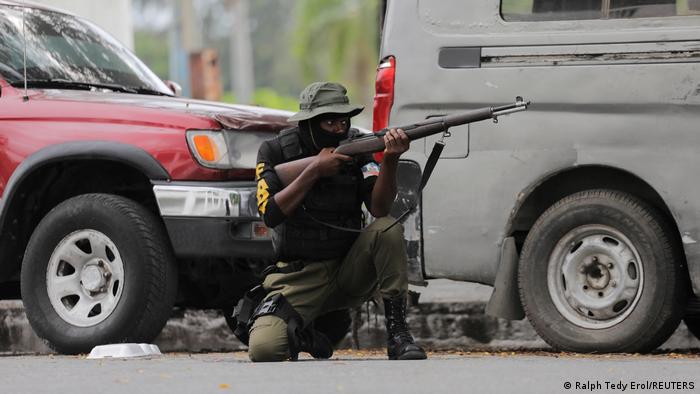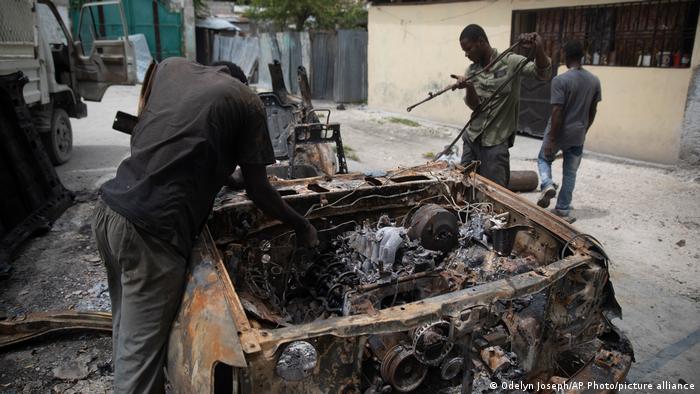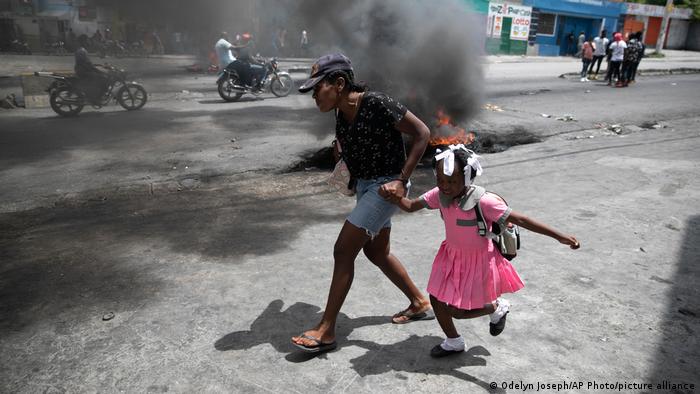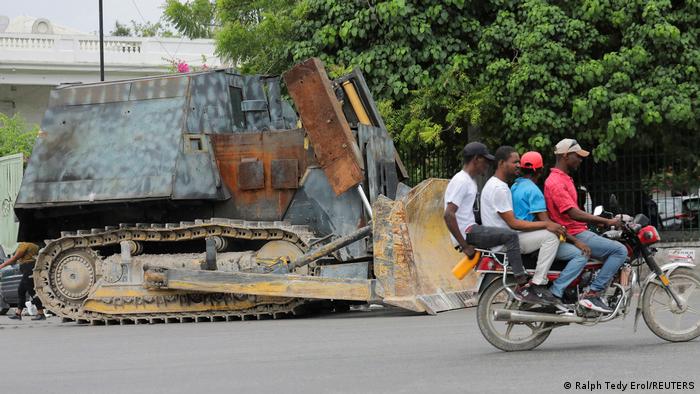
A recent surge in gang warfare has claimed hundreds of Haitian lives and displaced thousands in and around the capital Port-au-Prince as the country descends into lawlessness.
The fierce turf war has been raging for months, but has become more intense and widespread in recent weeks, paralyzing most of the country.
In recent weeks, clashes between gangs have spread through the capital’s main avenues, near the presidential palace.
Clashes have occurred most prominently in the capital’s Cite Soleil neighborhood, home to about 300,000 people and one of the country’s largest slums, where gangs have gained more influence in recent years. There, gang members have been destroying slum houses with bulldozers to expand their territory, as well as raping women and girls and killing ordinary citizens at random. Overrun by gangs, the army seems unable to exercise control and contain the violence.
How gangs undermine government control
For years, Haiti’s political elites used the gangs to achieve their own goals, silence dissent, and confront their rivals.
Although the intervention of criminal organizations in politics is not unique to Haiti, it has reached unprecedented levels in the poor Caribbean nation, especially after the assassination of President Jovenel Moise in July 2021.
Devastated by the violence, lack of food and fuel, Haitians have taken to the streets several times in recent months.
Powerful business families in Haiti have been paying the gangs to keep their trade safe for them. This is how some of the larger groups like the G9 have gained control of the capital’s port and managed it of smuggling weapons of war by themselves, some of which are more advanced than the weapons used by the Haitian armed forces.
In July, a series of arms-trafficking scandals in Haiti, including the discovery of weapons in a container labeled as church donations, prompted the UN Security Council to push for international cooperation to stop the flow of guns from the United States to Haiti.
In recent weeks, the G9 has blockaded the port, where most imported goods enter the country, exacerbating the food and fuel crisis.
Gangs instead of an army
The lack of a well-funded military has created a power vacuum that Haiti’s main gangs are competing to fill. Haiti disbanded its army in 1995 after a coup in 1991, following decades of military interference in politics and insurgency.
Since then, Haitian politicians, most notably former President Jean-Bertrand Aristide who came to power in 2001, have increasingly turned to gangs as a more reliable and compliant source of power to quell rebellions.
Haiti’s armed forces are outgunned and outnumbered by criminal gangs.
The slain president, Jovenel Moise, tried to remobilize the army in 2017, but was never able to muster enough soldiers and resources to match the gangs’ growing arms and manpower.
The exact number of gang members is hard to come by, but according to the National Network for the Defense of Human Rightsthere are more than 90 gangs in the country.
The country is plummeting into disaster
Once one of the richest French colonies, the nation of 11 million people suffers from an unproductive economy, with roughly two-thirds of its GDP coming from remittances sent home by Haitian migrants and international aid. according to World Bank data. The government’s tax revenue, the main source of funding for a national military, is as low as 5.6% of its relatively small GDP.
Local production in Haiti has almost stopped for several years, with the country importing most of its needs from outside.
About 60% of the population lives in poverty, almost half of the population needs immediate food assistance and 1.2 million suffer from extreme hunger, according to the World Food Program of the United Nations.
The spread of gang violence has made matters worse.
Between 2016 and 2020, gang violence cost the country $4.2 billion (€4.1 billion) annually, or 30 percent of its GDP, Bloomberg reported in September 2021. The resulting chaos has also discouraged foreign investment, blocked trade routes and disrupted the remnants of the gangs. the local economy, increasing inflation rates and food and fuel prices.
The turf war has seen schools and universities closed and the grim economic outlook increases the influence of gangs.
A UN report cited a survey of two local youth-focused organizations which found that 13% of children in a troubled neighborhood in Port-au-Prince had been in contact with members of armed gangs who tried to recruit them.
Without immediate and substantial intervention that can stop the vicious cycle of violence, chaos and poverty, young Haitians would have little choice but to join gangs in order to survive.
Edited by: Rob Mudge
[ad_2]
Source link


